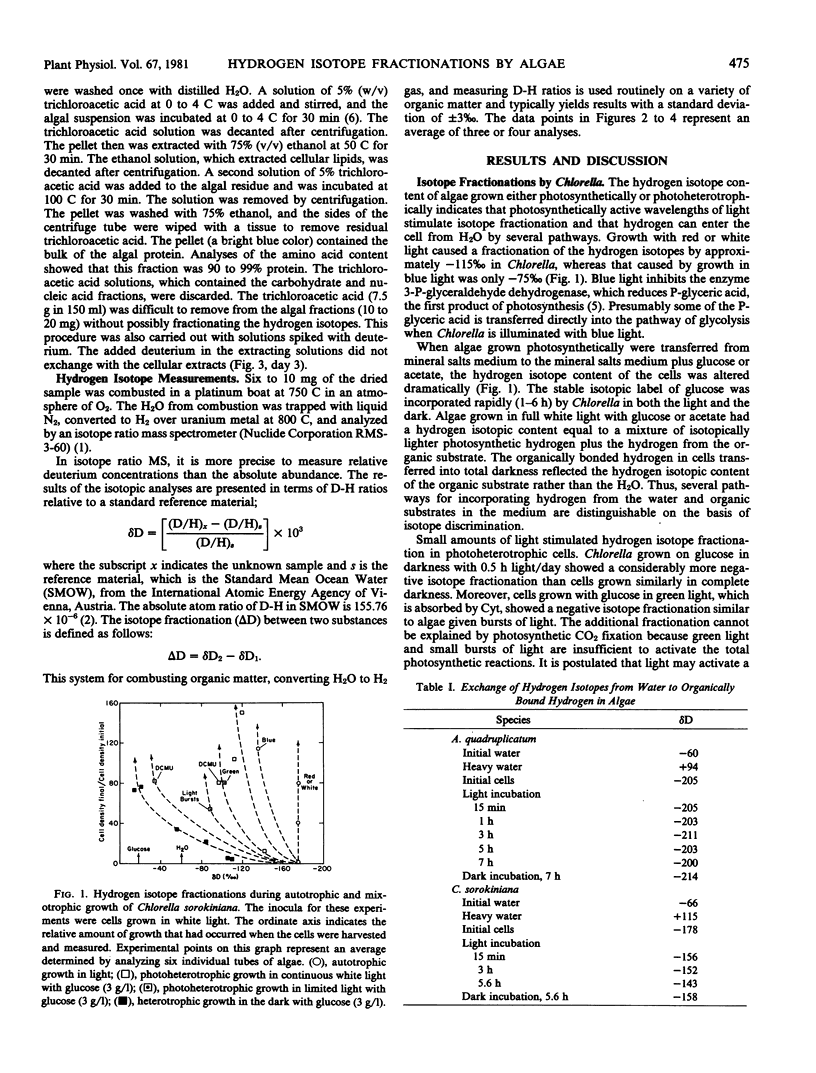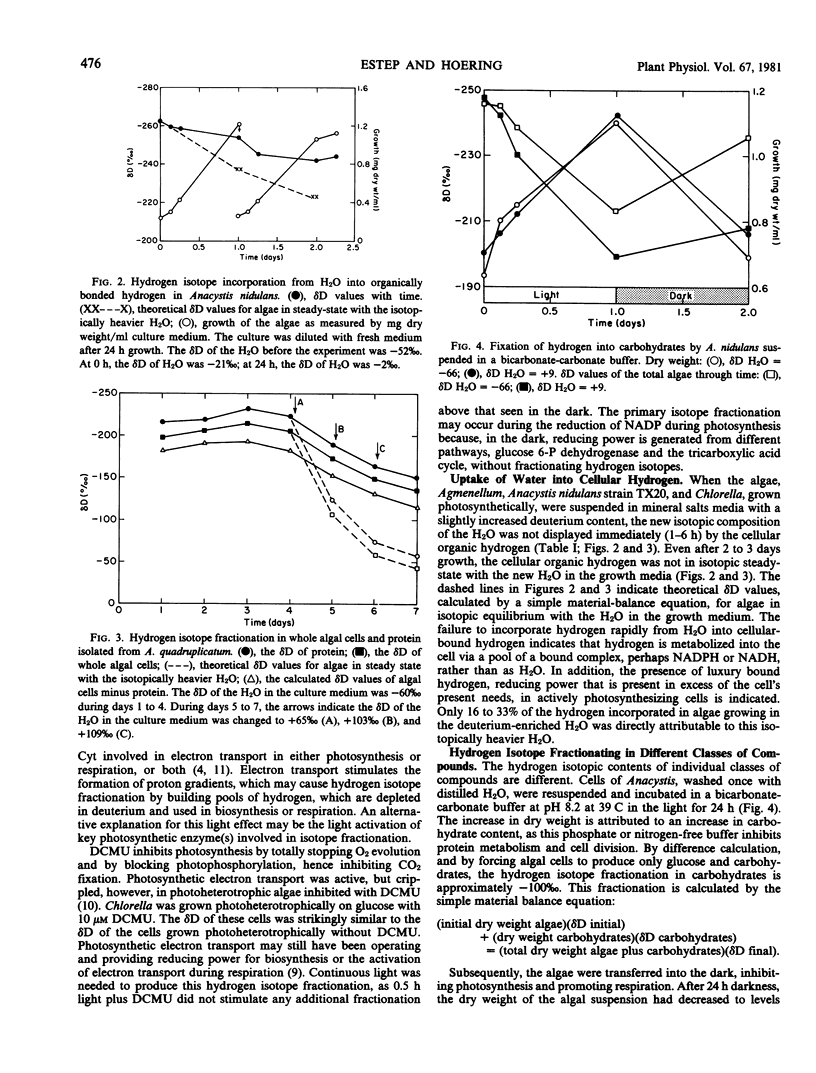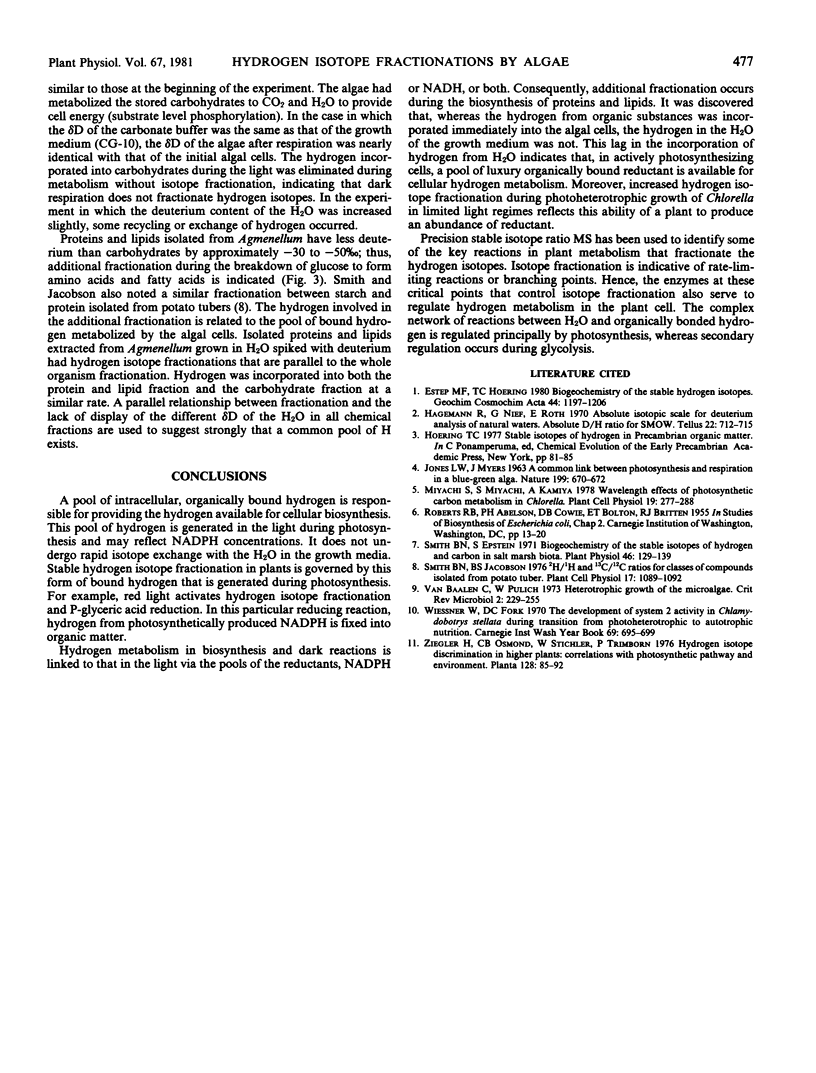Abstract
Isotope effects, studied with precision isotope ratio mass spectrometry, have been used to locate critical steps in the H metabolism of plants. By manipulating the growth conditions of versatile microalgae, the discrimination of H isotopes between water in the growth medium and the organically bonded H in carbohydrates from these microalgae was −100 to −120‰ and was regulated by both the light and the dark reactions of photosynthesis. Photosynthetic electron transport discriminated against the heavy isotope of H and formed a pool of reductant available for biosynthesis that was enriched in the light isotope. Growth in red or white light activated phosphoglyceric acid reduction and H isotope discrimination, when H was fixed into organic matter. An additional fractionation of −30 to −60‰ occurred during the biosynthesis of proteins and lipids and was associated with glycolysis. This fractionation paralleled the isotope effect seen in carbohydrate metabolism, indicating that H metabolism in photosynthesis was coupled with that in dark biosynthetic reactions via the pool of reductant, probably NADPH.
Full text
PDF



Selected References
These references are in PubMed. This may not be the complete list of references from this article.
- JONES L. W., MYERS J. A COMMON LINK BETWEEN PHOTOSYNTHESIS AND RESPIRATION IN A BLUE-GREEN ALGA. Nature. 1963 Aug 17;199:670–672. doi: 10.1038/199670a0. [DOI] [PubMed] [Google Scholar]


